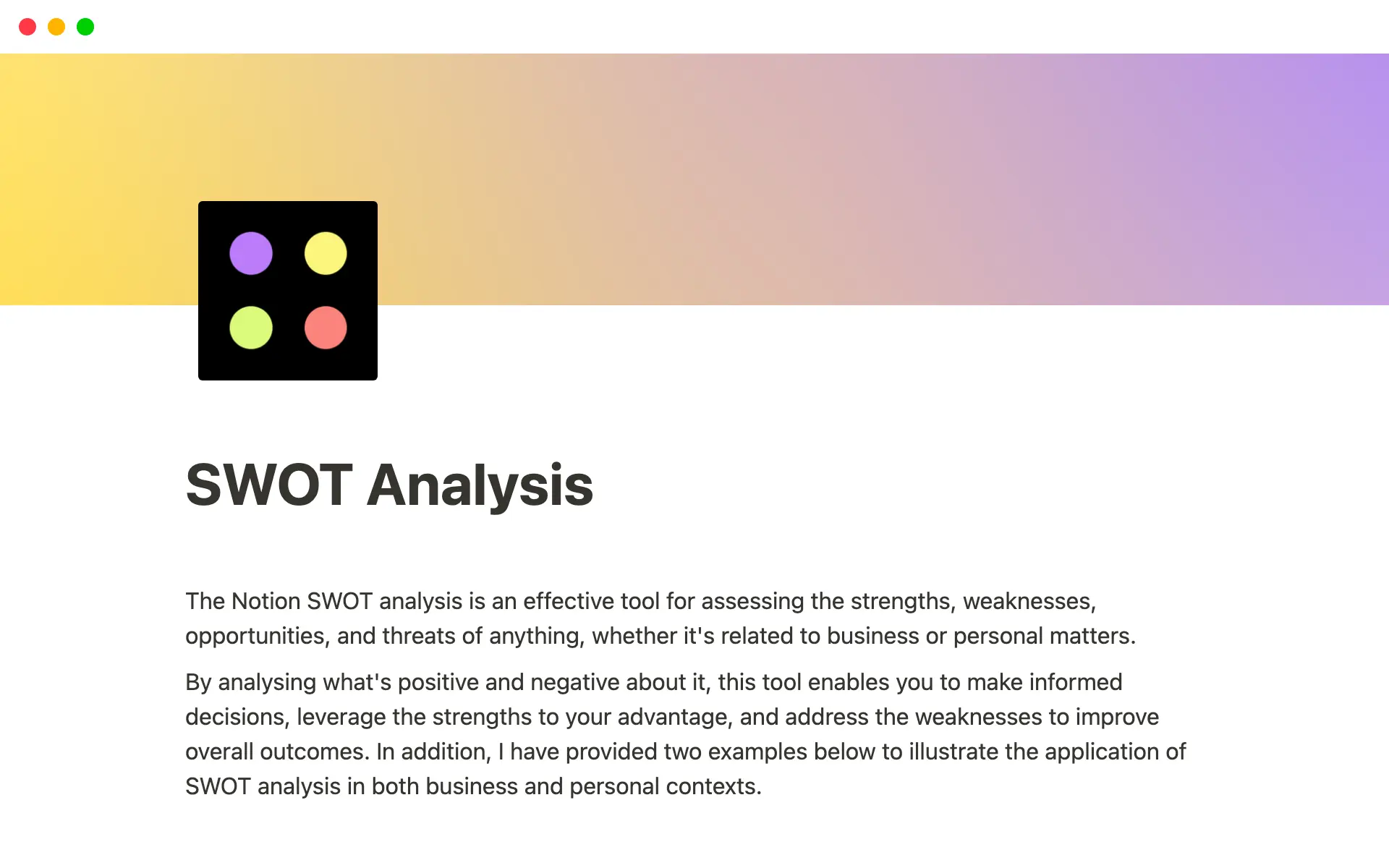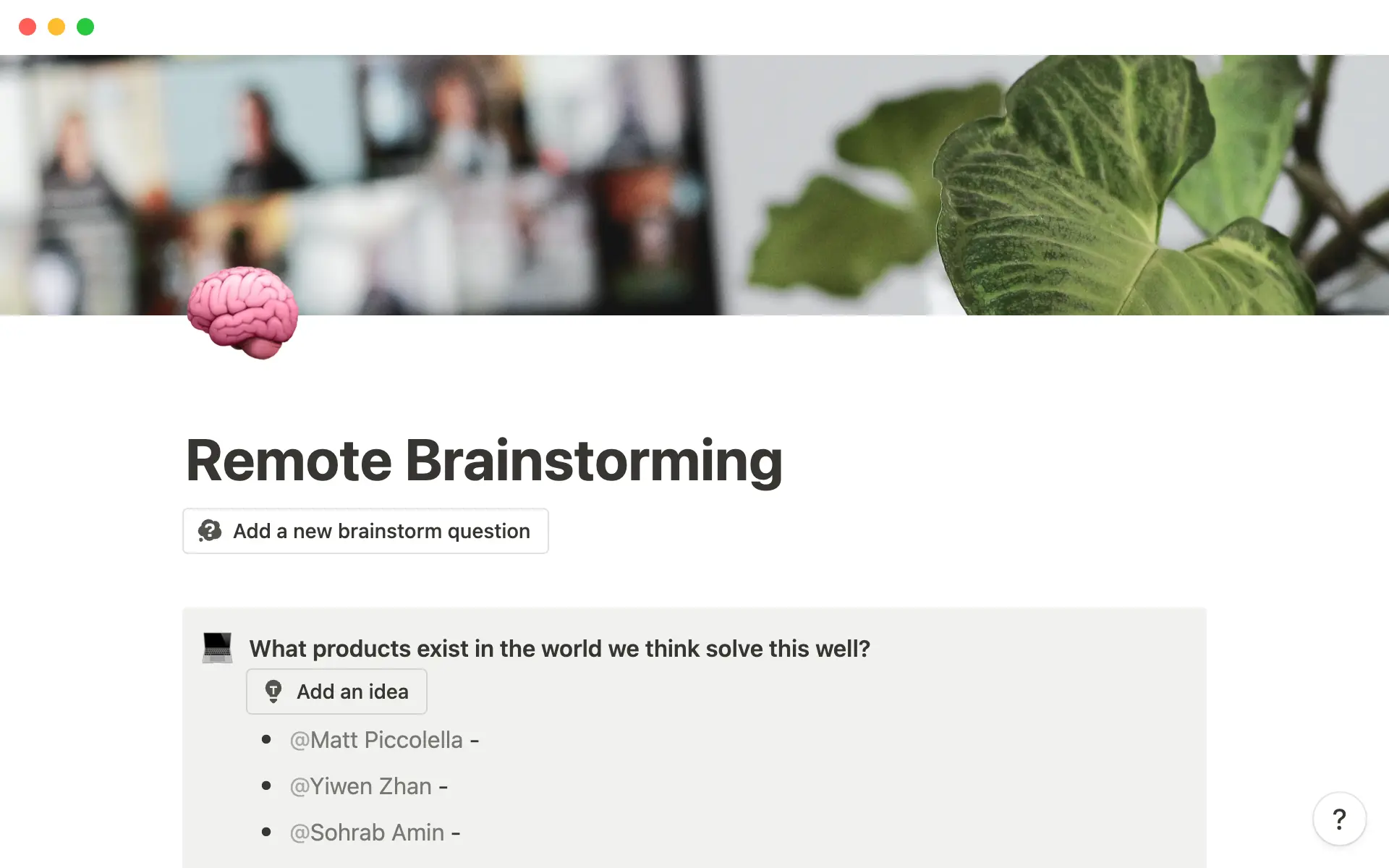Knowledge is power.
The more you know about your organization, industry, and competitors, the bigger the impact you stand to make. Equipped with the right insights, you can navigate challenges, seize opportunities, and drive innovation.
A NOISE analysis is a strategic planning tool that helps you build solution-oriented action plans to push your business forward. By assessing your current situation and future potential, your team can craft a cohesive roadmap that’s both grounded and forward-thinking.
What’s a NOISE analysis?
NOISE is an analysis method that examines the internal and external complexities of a business or project. It’s a solution-focused tool used during strategic planning, allowing you to analyze needs, opportunities, improvements, strengths, and exceptions.
Rather than focusing on a specific problem area, a NOISE analysis offers a more panoramic perspective. This might include immediate operational challenges, internal assets, and all the industry-based subtleties that may go overlooked.
Here are a few benefits of conducting this analysis:
A comprehensive business overview — an all-inclusive panorama of your business’ landscape means you’re not operating on assumptions. With a NOISE analysis, you build a 360-degree perspective, leveraging your strengths to address immediate needs, improvements, and opportunities.
Precise task prioritization — uncovering potential opportunities alongside urgent needs helps you strategically allocate resources like time, budgets, and team members to maximize outcomes and reach your goals.
Uncovered competitive advantages — figuring out what distinguishes you from competitors (especially if you’re in a saturated or niche market) helps you play to your strengths.
A more agile team — a comprehensive analysis uncovers potential bottlenecks you can create proactive strategies to avoid rather than employing reactive decision-making.
An effective NOISE analysis doesn’t just give you a snapshot of the present. It’s a guide to future success, helping you strategize with deeper clarity and preparedness.
What does NOISE stand for?
A NOISE matrix comprises four quadrants (needs, opportunities, improvements, and strengths) and a circle (exceptions).
Needs
You must address critical success factors like resource, team, and material needs to keep operations moving smoothly.
This quadrant can either confirm you have the tools necessary to work efficiently or identify operational gaps that need remedy, helping you design a realistic action plan to reach your objectives.
Opportunities
Potential areas where your organization can grow, innovate, or disrupt the market go into your opportunities quadrant. These typically include external factors, like emerging markets, technological advancements, and consumer trends.
Recognizing these opportunities using insightful market analysis and customer feedback lets you strategically position yourself with forward-thinking strategies that keep up with market volatility and ever-changing user behavior.
Improvements
Your improvement quadrant sheds light on the processes, protocols, and technologies your team can enhance. Pinpointing these weaknesses and inefficiencies helps build business strategies that prioritize the best results, even if that means refining established strategies. And it fosters a culture that values continuous growth and critical thinking.
Strengths
Whether a patented technology, respected brand reputation, or highly skilled team, your organization has unique assets that differentiate you from competitors. Identifying these strengths lets you double down on what you excel at. And when the market suddenly shifts or a crisis arises, these strengths help you rise to the challenge.
Exceptions
Your exception quadrant strays from the future-focused approach and identifies what’s happening right now in your organization. Maybe your team engages in informal knowledge-sharing sessions during their lunch breaks, which leads to stronger cross-departmental collaboration and brainstorming. Your exceptions quadrant recognizes that this is a weakness you’re already working on and showcases how you can continue doing so, perhaps by formally establishing a knowledge-sharing protocol.
A NOISE analysis versus a SWOT analysis
There are plenty of strategic planning tools and analysis methods, including the popular SWOT analysis. Both NOISE and SWOT methods evaluate a company’s market position, focusing on future growth from different perspectives.
But a SWOT analysis template breaks down your strengths, weaknesses, opportunities, and threats. This framework provides a balanced perspective of your internal capabilities (strengths and weaknesses) against external factors (opportunities and threats) influencing potential success.
Conversely, a NOISE analysis is more action-oriented. While it also highlights opportunities and strengths, it creates a more nuanced perspective by showcasing your current needs, potential improvements, and real-time exceptions. And rather than using more connotationally-negative language like “weaknesses” and “threats,” a NOISE analysis looks for solution-focused “improvements” and “opportunities” you can incorporate into business planning.
You don’t have to choose one or the other. Although NOISE is a comprehensive alternative to a SWOT analysis, you might use SWOT to develop a broad overview of your organization’s position and follow up with a NOISE analysis to dig deep into specific needs and improvements.
How to conduct a NOISE analysis: 7 steps
When conducting this analysis, follow our seven-step guide to ensure a thorough examination. You can then turn your document into an organization-wide template leaders can use to better document their analyses.
1. Decide on goals
Start by outlining analysis objectives, like reviewing a new product launch, niche target demographic, or inefficient manufacturing operations. Decide on these goals with fellow leaders to ensure you’re choosing the right focus, and be as specific as possible to take advantage of the deep-diving analysis provided by a NOISE.
If you aren’t sure where to begin, market research, demographic data, and previously successful business strategies might showcase a good focal point.
2. Create a NOISE analysis template
Craft a visual chart with a circle in the middle (your exception quadrant) and four columns of boxes extending from the circle as the remaining quadrants.
3. Fill in each quadrant
Moving quadrant-by-quadrant, let every key stakeholder contribute ideas to fill in the matrix. Throughout this brainstorming session, encourage everyone to share initial thoughts that aren’t fully formed — you can refine this information later.
4. Identify clusters
After collecting these insights, create cluster groups with similar findings. For instance, if you have multiple needs related to technology upgrades, cluster them into a broader category, like “tech advancements.” Clustering showcases overarching themes and patterns.
5. Vote on cluster categories
With your clusters clearly defined, it’s time for stakeholders to prioritize them. Discuss every cluster, pinpointing where each one aligns with broader organizational objectives to create a realistic and impactful strategic plan.
6. Establish measurements and milestones
Create a set of milestones and performance metrics to follow the progress of each cluster. Whether it’s a percentage increase in sales or a reduction in operational inefficiencies, developing clear measurements provides a roadmap to implement new strategies and track success.
7. Build the planning document
Consolidate all findings, strategies, and metrics into a comprehensive project plan document. This is your reference point, guiding your team when implementing the insights you derived from your NOISE analysis.
Integrate regular analyses into your workflow with Notion
The more you know about your business, competitors, and market, the better equipped you are to analyze growth opportunities. And Notion assists this process at every step.
Use a competitive analysis template to determine how you measure up against the competition and a feature market analysis to identify your product’s unique appeal. Or search the template gallery to find something that perfectly suits your team’s needs.






